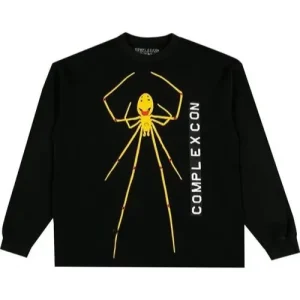Introduction
A Bathing Ape, commonly abbreviated as BAPE, is a prominent Japanese streetwear brand founded by Nigo (Tomoaki Nagao) in 1993. Known for its striking camo https://abathingclothing.com/ patterns, shark hoodies, and the iconic ape head logo, BAPE has significantly influenced global streetwear culture.
Founding and Early Years
Nigo established BAPE in Tokyo’s Harajuku district, a hub for youth culture and innovative fashion. Drawing inspiration from 1980s and 1990s pop culture, hip-hop, and street fashion, Nigo created a brand with a distinctive and playful aesthetic. The name “A Bathing Ape” is a nod to the Japanese saying “a bathing ape in lukewarm water,” symbolizing overindulgence and comfort, reflecting the brand’s playful and luxurious ethos.
Rise to Popularity
BAPE’s rise to prominence was marked by its strategy of producing limited quantities of each item, which created a sense of exclusivity and high demand. The brand’s unique designs quickly gained popularity among fashion-conscious youth in Japan. By the late 1990s and early 2000s, BAPE had gained international recognition, largely due to endorsements from celebrities and musicians, particularly in the hip-hop community.
Iconic Designs
- Camouflage Pattern: BAPE’s custom camo pattern, which integrates the ape head logo, is one of the brand’s most recognizable features.
- Shark Hoodie: Introduced in 2004, the full-zip shark hoodie, featuring a shark face design that zips over the hood, became an iconic piece and a symbol of streetwear fashion.
- BAPE Sta: Inspired by Nike’s Air Force 1, the BAPE Sta sneaker, characterized by a star logo, became a popular item among sneaker enthusiasts.
Collaborations
BAPE is well-known for its high-profile collaborations, which have played a crucial role in maintaining its relevance and broadening its appeal. Notable collaborations include:
- Adidas: Joint sneaker releases blending both brands’ iconic elements.
- Coca-Cola: Co-branded apparel and accessories.
- Marvel Comics: Clothing lines featuring Marvel characters.
- Artists and Musicians: Partnerships with notable figures such as Kanye West, Pharrell Williams, and Travis Scott have reinforced BAPE’s influence in the streetwear and music scenes.
Expansion and Commercial Success
In 2011, Nigo sold BAPE to the Hong Kong-based fashion conglomerate I.T Group. Despite the change in ownership, the brand continued to thrive and expand internationally, opening flagship stores in key cities like New York, London, Paris, and Shanghai. This global expansion helped BAPE secure its position as a leading name in streetwear fashion.
Legacy and Influence
BAPE has had a lasting impact on the streetwear industry, setting trends and influencing numerous other brands. Its innovative designs, strategic marketing, and celebrity endorsements have elevated streetwear from a subculture to a mainstream fashion phenomenon. BAPE’s ability to continually reinvent itself while staying true to its roots has ensured its lasting legacy in the fashion world.
Conclusion
From its beginnings in Harajuku to its status as a global streetwear icon, A Bathing Ape has made a significant mark on the fashion industry. Through its unique designs, influential collaborations, and cultural relevance, BAPE has cemented its place as a pioneer in the streetwear movement, shaping trends and inspiring generations of fashion enthusiasts.






